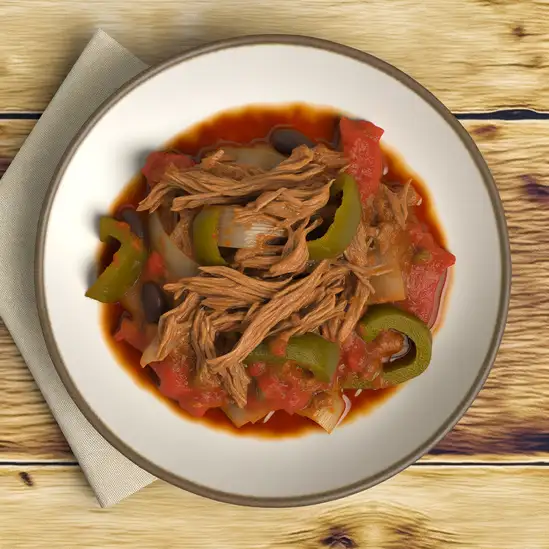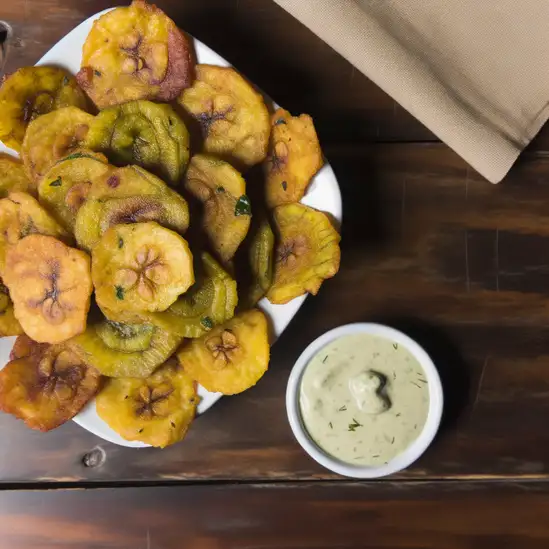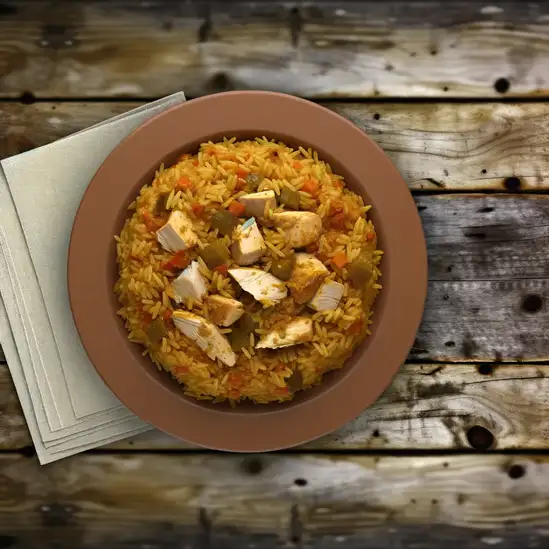



If you ever find yourself wandering through Cuba,you absolutely have to spend some time in Municipio de Trinidad. The moment you step onto its cobblestone streets,there’s this warm,timeless energy that wraps around you like a familiar song. The pastel-colored colonial buildings,with their wrought-iron balconies and blooming bougainvillea,create a picture-perfect scene that feels like stepping back into the 18th century—but with a lively,modern heartbeat. You’ll hear the distant strum of guitars and the rhythmic pulse of salsa spilling out from cozy cafés,blending with the chatter of locals and the occasional clip-clop of horse-drawn carriages. The air carries a mix of scents:freshly brewed Cuban coffee,sweet tropical fruits,and the salty hint of the nearby sea. Walking through the plazas,you can’t help but be drawn into the vibrant street life—artists sketching portraits,vendors selling hand-rolled cigars,and the laughter of children playing under the shade of ancient trees. There’s a genuine warmth in the people here; they’re proud of their heritage and eager to share stories about the city’s rich history and culture. What makes Trinidad truly special is how it balances its past and present. You can explore museums and colonial mansions one moment,then lose yourself in the lively rhythms of a local music night the next. It’s a place where every corner invites you to slow down,soak in the atmosphere,and savor the simple joys of Cuban life. Trust me,once you’ve experienced Trinidad,it stays with you long after you leave.
The information on this page is currently being reviewed by Tripkliq and should be used as a guide only
Eng word: Hello
Eng pronunciation: OH-lah
Local language: Hola
Eng word: Goodbye
Eng pronunciation: ah-DYOS
Local language: Adiós
Eng word: Thank you
Eng pronunciation: GRAH-syahs
Local language: Gracias
Eng word: How much
Eng pronunciation: KWAN-toh KWEH-stah
Local language: ¿Cuánto cuesta?
Eng word: Toilet
Eng pronunciation: BAH-nyoh
Local language: Baño
Eng word: Help me
Eng pronunciation: ah-YOO-dah-meh
Local language: Ayúdame
Eng word: Yes
Eng pronunciation: SEE
Local language: Sí
Eng word: No
Eng pronunciation: NO
Local language: No
Eng word: Excuse me
Eng pronunciation: pehr-DOHN
Local language: Perdón
Trinidad was founded by Spanish conquistador Diego Velázquez de Cuéllar in 1514, making it one of the oldest cities in Cuba.
In 1988, Trinidad and the nearby Valle de los Ingenios were declared UNESCO World Heritage Sites due to their well-preserved colonial architecture and historical significance.
The Plaza Mayor is the historic center of Trinidad, surrounded by beautiful colonial buildings, museums, and churches, making it a must-visit for tourists.
Housed in the Palacio Brunet, the Museo Romántico showcases 19th-century furnishings and offers a glimpse into the opulent lifestyle of Trinidad's colonial elite.
This grand church, located in the Plaza Mayor, is the largest in Cuba and features a stunning altar made of precious woods and adorned with gold leaf.
This picturesque cobblestone street is lined with colorful colonial houses and is a perfect spot for a leisurely stroll to soak in the city's historic charm.
The Valley of the Sugar Mills, or Valle de los Ingenios, is a short drive from Trinidad and offers a fascinating look into Cuba's sugar industry history, with ruins of sugar mills and slave quarters.
Located near the Plaza Mayor, the Casa de la Música is a popular venue for live music and dancing, offering tourists a chance to experience Cuba's vibrant musical culture.
This museum, housed in a former convent, chronicles the revolutionary struggle against counter-revolutionary forces in the Escambray Mountains during the 1960s.
In Municipio de Trinidad, the most common Power Adaptor is Type A, Type B.



A traditional Cuban dish made of shredded beef cooked in a tomato-based sauce with onions, bell peppers, and spices, often served with rice and black beans.

Twice-fried green plantains that are crispy on the outside and soft on the inside, often served as a side dish or snack.

A flavorful dish of rice cooked with chicken, vegetables, and spices, often colored with saffron or annatto.

A popular Cuban dessert, flan is a creamy caramel custard that is rich and sweet, often enjoyed as a finishing touch to a meal.

Boiled cassava (yuca) served with a garlicky citrus sauce called mojo, which adds a zesty flavor to the dish.

A classic Cuban dish consisting of black beans and white rice cooked together, symbolizing the historical coexistence of different cultures.

Marinated and pan-fried beef that is typically served with onions and lime, accompanied by rice and black beans.

A ground beef hash cooked with tomatoes, onions, bell peppers, olives, and raisins, typically served with rice and fried plantains.
Imagine stepping into a place where time seems to slow down,yet every corner buzzes with life—that’s Havana. The city greets you with a warm,sun-soaked embrace,where pastel-colored buildings wear their peeling paint like badges of history. Walking through its streets,you’ll hear the soulful strum of a guitar mingling with the distant chatter of locals sharing stories over strong Cuban coffee. The air carries a mix of salty sea breeze,sweet tobacco,and the faint aroma of frying plantains from street vendors.
Havana’s character is a beautiful blend of resilience and celebration. Classic American cars,polished to a shine,cruise alongside vintage bicycles,creating a moving museum of the past. The city pulses with music—whether it’s the lively beats spilling out of a neighborhood bar or the soft rhythms of a late-night jazz club. People here have a way of making you feel like you belong,inviting you to dance,laugh,and savor life’s simple pleasures.
Don’t miss the chance to sip a perfectly crafted mojito in a sunlit plaza,watching the world drift by. Taste the rich,smoky flavors of Cuban cuisine,from ropa vieja to fresh seafood caught that morning. Havana isn’t just a place to visit; it’s a place to feel alive,to soak in stories etched into every brick and smile. Trust me,once you’ve wandered its vibrant streets,Havana’s spirit stays with you long after you leave.
Imagine stepping into a place where the sun kisses your skin and the ocean breeze carries the scent of salt and tropical blooms—welcome to Varadero,Cuba. This isn’t just a beach town; it’s a vibrant stretch of life where turquoise waters lap against powdery white sands,inviting you to slow down and soak it all in. The rhythm of the waves blends with the distant hum of salsa music drifting from open-air cafes,creating a soundtrack that feels both lively and laid-back.
Walking through Varadero,you’ll notice the colorful buildings with their faded pastel hues,each telling stories of a rich Cuban heritage. Locals greet you with warm smiles and a friendly “¡Hola!” as they go about their day,whether it’s selling fresh mangoes or crafting handmade cigars. The air is thick with the aroma of grilled seafood and sweet tropical fruits,tempting you to try a plate of ropa vieja or sip on a perfectly mixed mojito while watching the sun dip below the horizon.
What makes Varadero truly special is its blend of natural beauty and genuine Cuban spirit. It’s a place where you can lounge under swaying palms,dive into crystal-clear waters teeming with colorful fish,and then wander into town to experience the lively markets and vibrant street life. It’s not just a destination; it’s a feeling—a warm embrace of culture,nature,and simple pleasures that stays with you long after you leave.
If you find yourself wandering through Cuba,Cienfuegos is a place that quietly steals your heart without shouting for attention. There’s a gentle rhythm here,a laid-back elegance that feels like a slow dance between the sea breeze and colonial charm. As you stroll along the waterfront Malecón,the salty air mingles with the faint scent of grilled seafood from nearby paladares,while the soft hum of classic Cuban tunes drifts from open windows. It’s a city that invites you to pause,breathe,and soak in its graceful blend of history and everyday life.
The architecture is a feast for the eyes—French-inspired neoclassical buildings painted in pastel hues,their balconies draped with flowering vines. Walking through the central Parque José Martí,you’ll catch locals chatting animatedly,children playing,and the occasional street musician strumming a guitar,all under the warm Cuban sun. There’s a genuine warmth in the smiles here,a sense of community that feels both timeless and welcoming.
What really sets Cienfuegos apart is its balance of culture and calm. You can spend your mornings exploring the elegant Teatro Tomás Terry or the quirky Museo Provincial,then lose yourself in the vibrant colors of the local market. And when evening falls,the city lights up with a soft glow,inviting you to sip a cold mojito while watching fishing boats bob gently in the bay. Cienfuegos isn’t just a place to visit—it’s a place to feel,to savor,and to remember long after you’ve left.
If you find yourself wandering through Cuba,Camagüey is a city that wraps you in its slow,rhythmic heartbeat the moment you arrive. Unlike the bustling tourist spots,here the streets twist and turn like a labyrinth,inviting you to get a little lost and discover unexpected courtyards,colorful colonial buildings,and lively plazas where locals gather. There’s a gentle hum of life—children’s laughter,the clatter of horse-drawn carriages,and the distant strum of a guitar—that feels both timeless and alive.
Walking through Camagüey,you’ll notice the scent of fresh coffee mingling with the earthy aroma of rain on cobblestones. The city’s character is deeply rooted in its art and culture; murals splash vibrant stories across walls,and small galleries showcase the work of passionate local artists. Stop by a café and sip on a rich,dark espresso while watching the world drift by,or grab a plate of ropa vieja that tastes like it’s been simmered with love for hours.
What makes Camagüey truly special is its warmth—the people here are open and curious,eager to share their stories and traditions. Whether you’re chatting with a street vendor or joining a spontaneous dance in a plaza,you’ll feel like you’re part of something genuine. It’s a city that doesn’t rush you,but instead invites you to slow down,breathe in its history,and savor the simple,beautiful moments that make travel unforgettable.
If you want to feel the heartbeat of Cuba in a way that’s raw,vibrant,and deeply soulful,Santiago de Cuba is where you need to be. This city pulses with a rhythm all its own—music spills out from every corner,from the lively streets to the cozy,dimly lit bars where locals dance with effortless joy. The air carries a mix of salty sea breeze,rich coffee,and the faint,sweet scent of tropical flowers,wrapping you in a warm embrace the moment you arrive.
Walking through Santiago feels like stepping into a living storybook. The colorful colonial buildings,weathered but proud,lean into narrow streets buzzing with chatter and laughter. You’ll hear the clatter of dominoes,the strum of guitars,and the call of street vendors selling fresh mangoes and spicy,smoky street food that tingles your taste buds. There’s a laid-back energy here,a sense of community that invites you to slow down and soak it all in.
What makes Santiago truly unforgettable is its spirit—a blend of Afro-Cuban traditions,revolutionary history,and a passion for life that’s impossible to ignore. Whether you’re exploring the Castillo del Morro overlooking the bay or joining a spontaneous street party,you’ll find yourself swept up in a city that celebrates resilience,music,and warmth. It’s not just a place to visit; it’s a place that stays with you long after you’ve left.
If you ever find yourself craving a place where time seems to slow down and the air hums with a gentle rhythm,Baracoa is that kind of spot. Nestled on Cuba’s eastern tip,this town feels like stepping into a living postcard—lush green mountains cradle the colorful colonial buildings,and the scent of tropical flowers mingles with the salty breeze from the nearby sea. Walking through its narrow streets,you’ll hear the soft chatter of locals,the distant strum of a guitar,and the occasional splash from the river that runs through town.
Baracoa’s charm isn’t just in its scenery but in its soul. It’s a place where Afro-Cuban traditions pulse through the vibrant markets,and the food tells stories of the land—imagine biting into a fresh coconut or savoring the rich,earthy flavors of local chocolate,made from cacao grown right in the surrounding hills. The city’s pace invites you to linger,to sip on a cup of strong Cuban coffee while watching fishermen haul in their catch or children playing by the waterfront.
What really sets Baracoa apart is its blend of nature and culture. You can hike through dense rainforests,discover hidden waterfalls,and then return to town to enjoy a lively conversation with a friendly local over a plate of ‘bocadillo’ (guava paste) and cheese. It’s a place that feels both untouched and warmly welcoming,where every corner holds a story waiting to be shared.
Vendors sell low-quality or fake 'handmade' souvenirs at inflated prices, claiming they are authentic and locally crafted.
Tourists are tricked into exchanging money at unfavorable rates or given outdated or fake bills, especially when using unofficial money changers.
Tourists are approached by locals offering 'authentic' Cuban cigars at a fraction of the price. These are often counterfeit and of poor quality.
Unlicensed individuals pose as tour guides, offering subpar or incomplete tours while charging high fees.
Tourists booking horseback riding tours may be quoted one price initially, only to be charged additional fees for guides, equipment, or 'mandatory' tips.
Unlicensed taxi drivers or even some official ones may overcharge tourists, especially if they are unfamiliar with local rates.
Some restaurants may add extra items or inflate prices on the bill, assuming tourists won't notice.
Locals may approach tourists with emotional stories about needing money for food, medicine, or family emergencies, which are often fabricated.
The use, possession, and trafficking of illegal drugs are strictly prohibited in Cuba, including in Trinidad. The Cuban government enforces severe penalties for drug-related offenses, which can include lengthy prison sentences. Tourists should avoid any involvement with illegal drugs to avoid legal trouble and ensure a safe visit.
In Trinidad, Cuba, smoking is generally allowed in public places, including restaurants, bars, and outdoor areas. However, it is always courteous to ask for permission before lighting up in close proximity to others, especially in enclosed spaces. Some hotels and accommodations may have designated smoking areas or non-smoking policies, so it is advisable to check with the establishment.
Vaping is not as common in Cuba as it is in some other countries, and there are no specific regulations that distinguish vaping from smoking. As a result, the same general rules for smoking apply to vaping. It is best to be considerate and ask for permission before vaping in public or enclosed spaces.
What are other people saying about Municipio de Trinidad?
Recent Social posts about Municipio de Trinidad
There is nothing to show you for now.